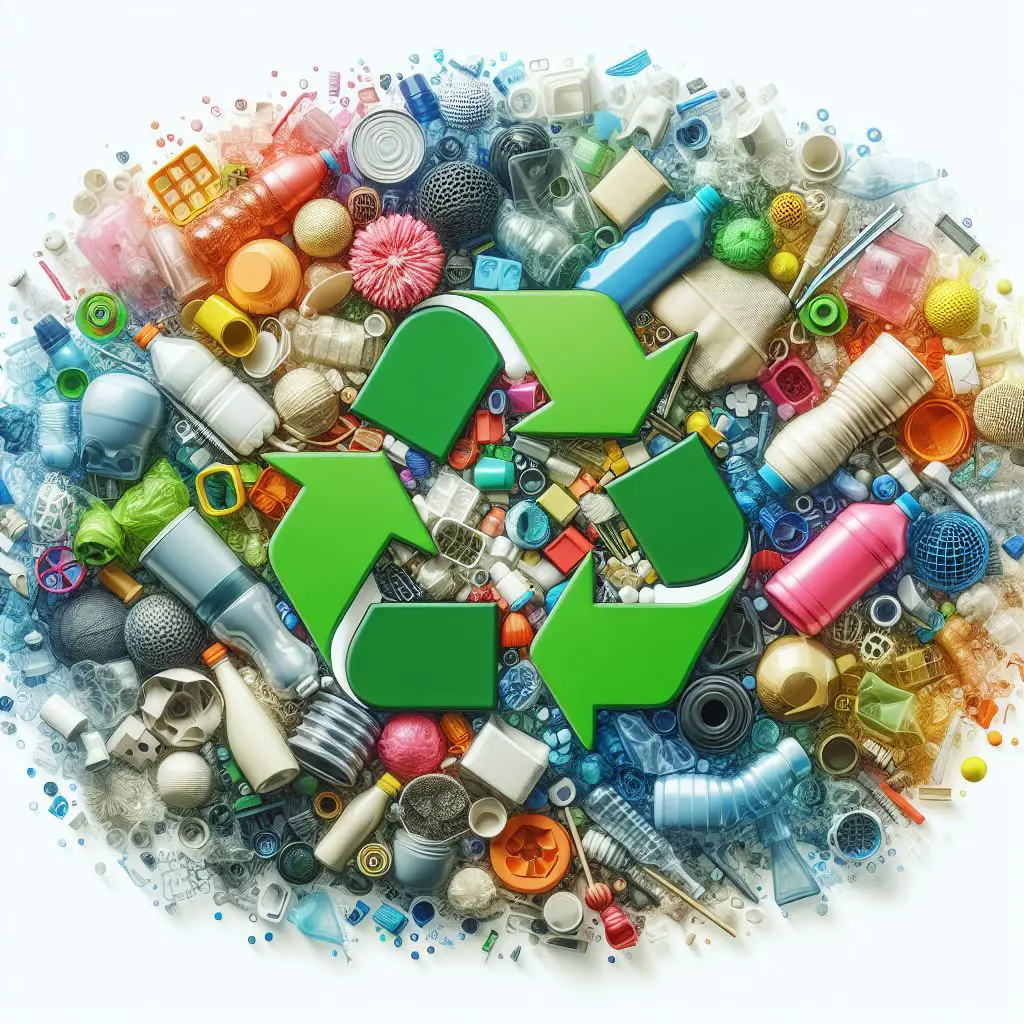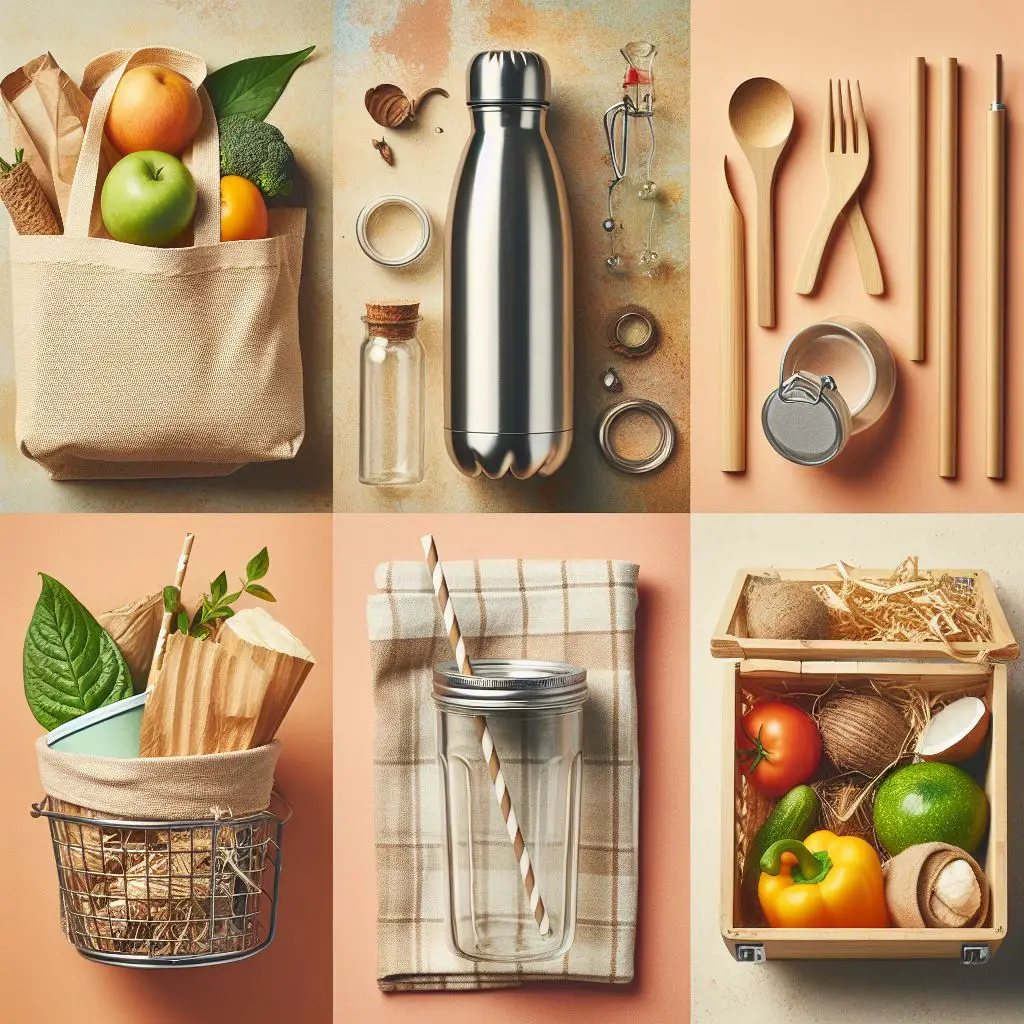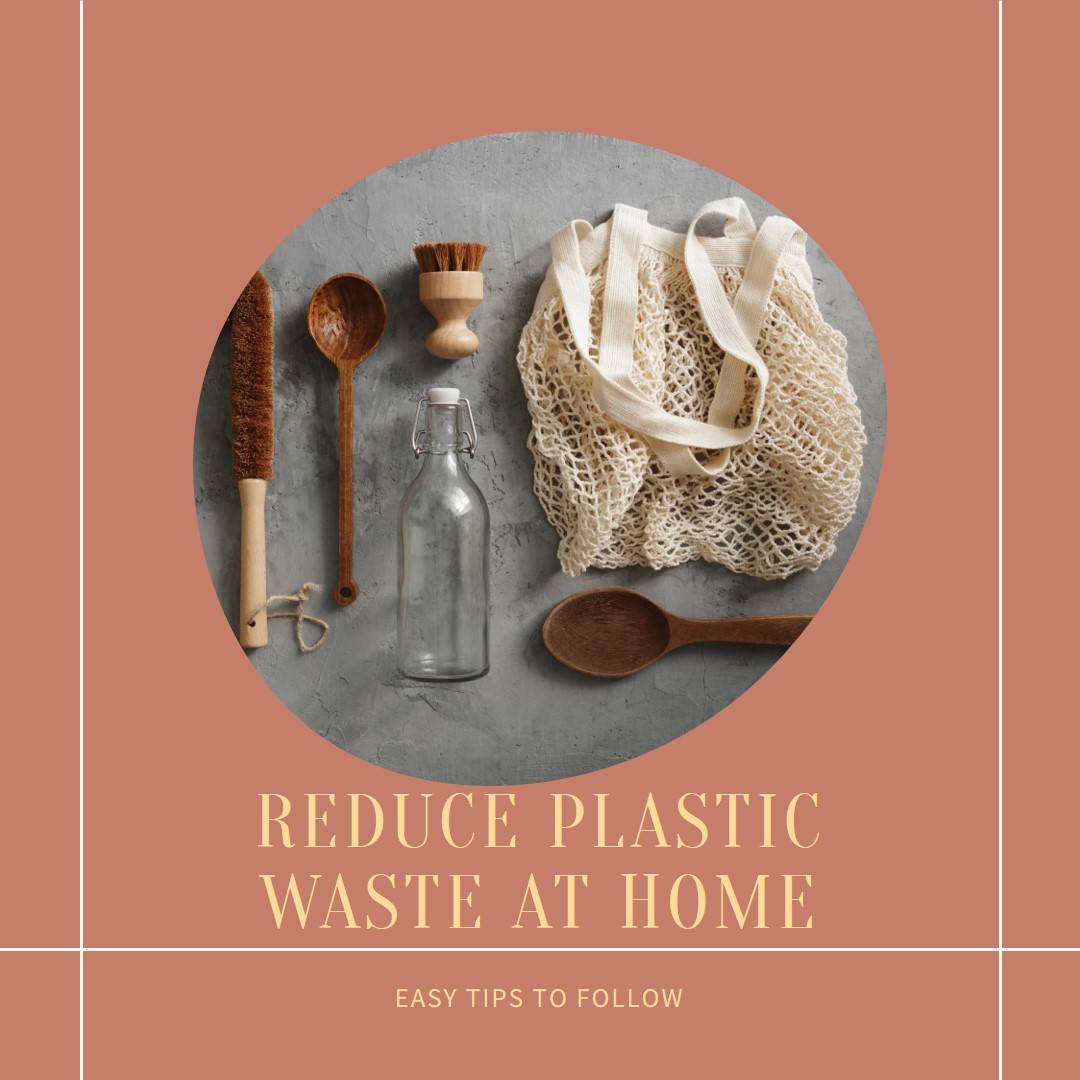Reducing plastic waste is an important step towards creating a more sustainable future. Plastic takes hundreds of years to break down, harming wildlife and the environment in the process. The average American generates over 200 pounds of plastic waste per year. But small changes around the home can make a big difference. Here are simple, practical tips to reduce single-use plastics and your overall plastic footprint.
Stop Using Single-Use Plastics
Single-use plastics like straws, bags, bottles, and packaging make up a large portion of plastic waste. Try to avoid or give up the following whenever possible:
Plastic Straws
Americans use over 500 million plastic straws daily. Skip the straw or choose reusable options instead:
- Stainless steel
- Glass
- Bamboo
- Silicone
- Hard plastic
The movement away from plastic straws is growing. Major companies like Starbucks and McDonald’s have pledged to move away from plastic straws in their stores.
Plastic Bags
Plastic bags are another huge contributor to plastic pollution. The average person uses 500 per year. To cut down, you can:
- Bring reusable bags when shopping
- Refuse plastic bags for small purchases
- Choose paper bags instead of plastic
- Reuse plastic bags as trash can liners or to pick up pet waste
Some grocery stores offer credits or discounts for using reusable bags as well. Over 127 countries now have bans on plastic bags in place.
Plastic Bottles
Americans purchase over 50 billion plastic water bottles per year. Just 20% get recycled. You can help by:
- Carrying a reusable water bottle
- Choosing aluminum cans or glass bottles
- Installing water filters to refill at home
- Finding public water refill stations
Food Packaging
From snacks to fresh produce, excess plastic packaging runs rampant. You can make better choices by:
- Buying in bulk with reusable containers
- Choosing loose vegetables instead of pre-packaged
- Avoiding overwrapped convenience foods
- Packing lunches and snacks in reusable containers
Reducing your reliance on single-use plastics just takes a bit more planning. But it gets easier over time and makes a big environmental difference.
Recycle Properly

Recycling plastic helps keep it out of oceans and landfills. But a shocking 91% of plastic waste isn’t recycled. By recycling properly, we can recover more value from the plastic we use.
Follow these best practices when recycling plastic at home:
- Learn your local recycling policies – rules differ across regions
- Empty and rinse containers to avoid contamination
- Avoid putting plastic bags in curbside recycling – return these to designated drop-offs instead
- Break down bulky items to save space
- Avoid putting non-recyclables like hoses, wires, and electronics into the recycling
You can also up reg your recycling game by:
- Supporting policies for advanced recycling technologies like chemical recycling
- Volunteering for local plastic cleanup initiatives
- Educating friends and family on proper recycling practices
When in doubt, remember the mantra: “Reduce first, then reuse and recycle.” Proper recycling keeps plastics in use longer. However, reducing overall plastic consumption has the biggest positive impact.
Be Mindful About Your Plastic Product Choices
Not all plastics are created equally. Some are safer for health and the environment than others. Make conscious choices about the plastics you bring into your home.
Avoid PVC Products
Polyvinyl chloride, commonly known as PVC or vinyl, is found in a range of products from pipes to flooring, shower curtains, and toys. PVC often contains hazardous additives including lead, cadmium, and phthalates. When produced and disposed of, PVC releases dioxins which can cause developmental and reproductive issues. Consider safer alternatives instead, such as:
- PEX, copper, or cast iron for pipes
- Linoleum, stone, or wood floors
- Polyester or canvas shower curtains
- Non-vinyl toys
Don’t Use Styrofoam
Polystyrene foam, frequently referred to by the brand name Styrofoam, is notorious for its environmental issues. It leaches hazardous chemicals, breaks down into microplastics, and is rarely accepted for recycling. Avoid one-time uses of Styrofoam cups, takeout containers, packing peanuts, coolers, and more. Choose reusable or paper-based alternatives instead.
Look for Symbols
Check plastic goods for symbols inside chasing arrows. These resin identification codes help identify the type of plastic used. As a rule of thumb:
| Number | Type | Considerations |
|---|---|---|
| 1 | PET or PETE (polyethylene terephthalate) | Commonly accepted for recycling. Used for water bottles and food containers. Avoid reuse over time due to health concerns with old plastic leaching antimony. |
| 2 | HDPE (high-density polyethylene) | Avoided for health issues. Commonly found in pipes, siding, and flooring. |
| 3 | PVC (polyvinyl chloride) | LDPE (low-density polyethylene) |
| 4 | Harder to recycle type used for dry cleaning bags, and squeeze bottles. | Recyclable plastic for yogurt cups medicine bottles, and straws. |
| 5 | PP (polypropylene) | Catch-all categories include Tritan, acrylic, and polycarbonate. Check if curbside recycling is accepted. |
| 6 | PS (polystyrene) | Styrofoam. Avoid due to recycling and environmental issues. |
| 7 | Other plastics including PC, nylon | Catch-all categories include Tritan, acrylic, and polycarbonate. Check if curbside recycling is accepted. |
Choosing the most eco-friendly plastics reduces your environmental impact and promotes better recycling.
Make Simple Swaps Around the House

Much of the plastic we use daily can easily be swapped out for more sustainable options. Get into better habits with items you commonly use for laundry, cleaning, food storage, and more.
Kitchen and Dining
The kitchen offers many opportunities to go plastic-free. Be mindful of better choices with these items:
- Dishes: Opt for glass or ceramic instead of plastic dishware and cups.
- Utensils: Choose stainless steel over plastic utensils. Bamboo also works well for cutting boards and tools.
- Food storage: Glass or stainless steel food containers avoid stains and chemical leaching over time.
- Sandwich and snack bags: Swap plastic bags for reusable silicone or beeswax wrap.
- Coffee pods: The billions of single-use coffee pods consumed annually create tons of plastic and aluminum waste. Choose loose coffee with a reusable filter instead.
Cleaning
Many conventional cleaners come in single-use plastic bottles. For a more eco-friendly routine:
- Choose concentrated, compostable cleaners
- Purchase in bulk sizes instead of multiple small bottles
- Refill spray bottles at home
- Swap plastic scrub sponges and pads for reusable options
Microfiber cloths also work well for dusting and cleaning. Look for options made from recycled materials.
Laundry
Even laundry rooms harbor avoidable plastics. You can make small upgrades like:
- Using laundry detergent sheets or balls instead of bottled liquid detergent
- Choosing non-plastic hampers and laundry baskets
- Air drying clothes on racks instead of dryer sheets
With a few strategic product swaps, you can remove various single-use plastics from your daily lifestyle. These small changes make a meaningful difference in the fight against plastic pollution.
Be a Conscious Consumer
Voting with your wallet incentivizes businesses to use less plastic packaging across their supply chain. Consider the company’s overall environmental commitment when possible with these buying strategies:
Seek Out Plastic-Free Alternatives
An increasing number of brands now offer plastic-free versions of common products:
- Bamboo toothbrushes: Brands like Brush with Bamboo offer compostable options
- Paper tape: Washi tape comes in decorative prints, avoiding plastic tape dispensers
- Bar shampoo & soap: Ethique, HiBAR, and other brands sell hair and body products without plastic containers
- Reusable produce bags: Mesh or cloth produce bags avoid the need for plastic at grocery stores
Seek out clever swaps like these to avoid unnecessary plastics in consumer goods.
Support Businesses With Eco Values
Research brands embracing sustainability in their business models and practices:
- Look for B Corps-certified companies meeting standards of social and environmental performance like Alter Eco Foods and Method Home
- Check for organizations proudly displaying plastic reduction commitments and progress on their websites
- Opt for certified climate-neutral companies like Grove Collaborative offsetting unavoidable plastics in their shipments
- Choose durable goods from companies like Patagonia with robust repair, reuse, and recycling programs
When possible, factor a company’s overall eco-consciousness into purchasing decisions. This helps motivate positive change.
Buy In Bulk
Here is the continuation of the article:
Reducing packaging waste is a benefit of buying certain items in bulk. Some products to consider purchasing in larger formats include:
- Dry goods like rice, oats, pasta, grains, nuts
- Flours
- Dried beans and lentils
- Granola and cereals
- Coffee and tea
- Soap, shampoo, and cleaning products
When buying food in bulk, bring reusable containers from home to avoid plastic packaging. See if your local grocery store has a bulk bin section to scoop your own goods. Stores like Costco allow shoppers to skip individual packaging waste.
However, keep in mind that bulk buying only saves waste if you are able to use up products before expiration. Stick to quantities that make sense for your household.
Support Package-Free Shops
A growing number of shops sell package-free, low waste and plastic-free goods. These stores allow you to shop sustainably across categories like:
- Food and pantry items
- Personal care and home products
- Cleaning supplies
- Baby products
Bring your own containers and bags when visiting package-free shops. Or purchase reusable vessels and dispensers in-store.
With some savvy shopping skills, you can dodge plastic packaging across many regular purchases. Seek out retailers aligning business objectives with your waste reduction goals.
Lead By Example in Your Community
Small daily choices to avoid plastics make a collective difference. However, larger initiatives create bigger impacts in reducing plastic waste. Consider joining or launching community efforts with the following ideas:
Support Plastic Bag Bans and Fees
Plastic bag fees and bans are on the rise globally. Help speed your local area’s progress by:
- Contacting lawmakers to share your support for legislation
- Speaking up at town meetings to advocate for transition periods and exemptions for lower-income residents
- Volunteering to educate community members and distribute reusable bags
Bag fees and bans drastically curb plastic waste according to growing evidence. Pave the way for new social norms around plastic through policy reform.
Start Community Initiatives
Launching local programs makes an impact beyond your household. Initiatives could include:
- Neighborhood cleanup days – Organize litter removal along beaches, parks, highways, and neighborhoods.
- Plogging groups – “Plogging” combines jogging and picking up litter for community improvement.
- Anti-waste community challenges – Recruit residents to take no- or low-plastic pledges for a set timeframe with prizes and friendly competition.
- Recycling ambassadors – Educate residents on proper recycling with informational campaigns to improve contamination rates.
Tap into grassroots efforts to engage those around you in the goal of curbing plastic waste.
Support Youth Activism
Today’s students deeply understand the threats of climate change and plastic pollution. With the impressive initiative, young leaders have:
- Launched lawsuits against governments over environmental protections
- Lobbied for green school policies like reduced cafeteria waste
- Organized community plastic collections with classmates
- Founded youth organizations to advocate for sustainability
Look for opportunities to support youth environmental activism in your community. Student-led initiatives breed hope for the future.
Small daily choices to avoid plastic waste add up quickly. But bigger change often starts from the ground up. Help be a catalyst in your neighborhood or city by advocating for impactful anti-plastic measures.
Frequently Asked Questions
Wondering how to put these plastic reduction tips into practice? Here are answers to some frequently asked questions:
How do I motivate my family to cut down on plastic use?
- Lead by example – Children often model behavior they see daily.
- Make eco-friendly practices fun – Set up a neighborhood plastic scavenger hunt or contest for who can go the longest without single-use plastics.
- Frame through values – Discuss the environmental implications to tap into moral motivations.
- Offer incentives – Promise rewards for reaching sustainability goals.
Are there exceptions for necessary medical plastics?
Absolutely. Plastics play an indispensable role in medical applications like syringes, implants, prosthetics, and personal protective equipment. Do not compromise health or hygiene to avoid these lifesaving uses.
However, advocate for proper recycling or disposal of biohazardous medical waste whenever possible.
How can I avoid plastic if I have no budget for expensive swaps?
With some creativity, reducing plastic waste is possible on any budget:
- Borrow or purchase secondhand reusable items
- Use glass jars and food containers around your kitchen
- Choose unpackaged fruits and vegetables or those with peels you can compost
- Seek out no-cost recycling programs in your community
- Opt for paper, aluminum, and glass packaging when possible in the products you buy
- Check Buy Nothing groups and Freecycle for reusable items being given away
What if I live in an apartment without great recycling pickup?
Those in apartments or neighborhoods with limited recycling pickup have a few options:
- Speak with landlords or property management about expanding pickup
- Drop recyclables at public drop-off locations if available
- Coordinate shared drop-offs with friends who live in eligible areas
- Hold onto higher-value plastics like #1 and #2 bottles and containers until you can drop at a recycling center
Over time, advocate for better recycling infrastructure and policies in your city. But adapt through creative solutions in the meantime.
The Bottom Line
Individual actions to reduce plastic add up to massive results. Small steps around your home set a path for bigger community change. Choosing to reuse, recycle, and avoid unnecessary plastics makes a real difference for future generations. What will your first step be on the journey toward plastic reduction?
